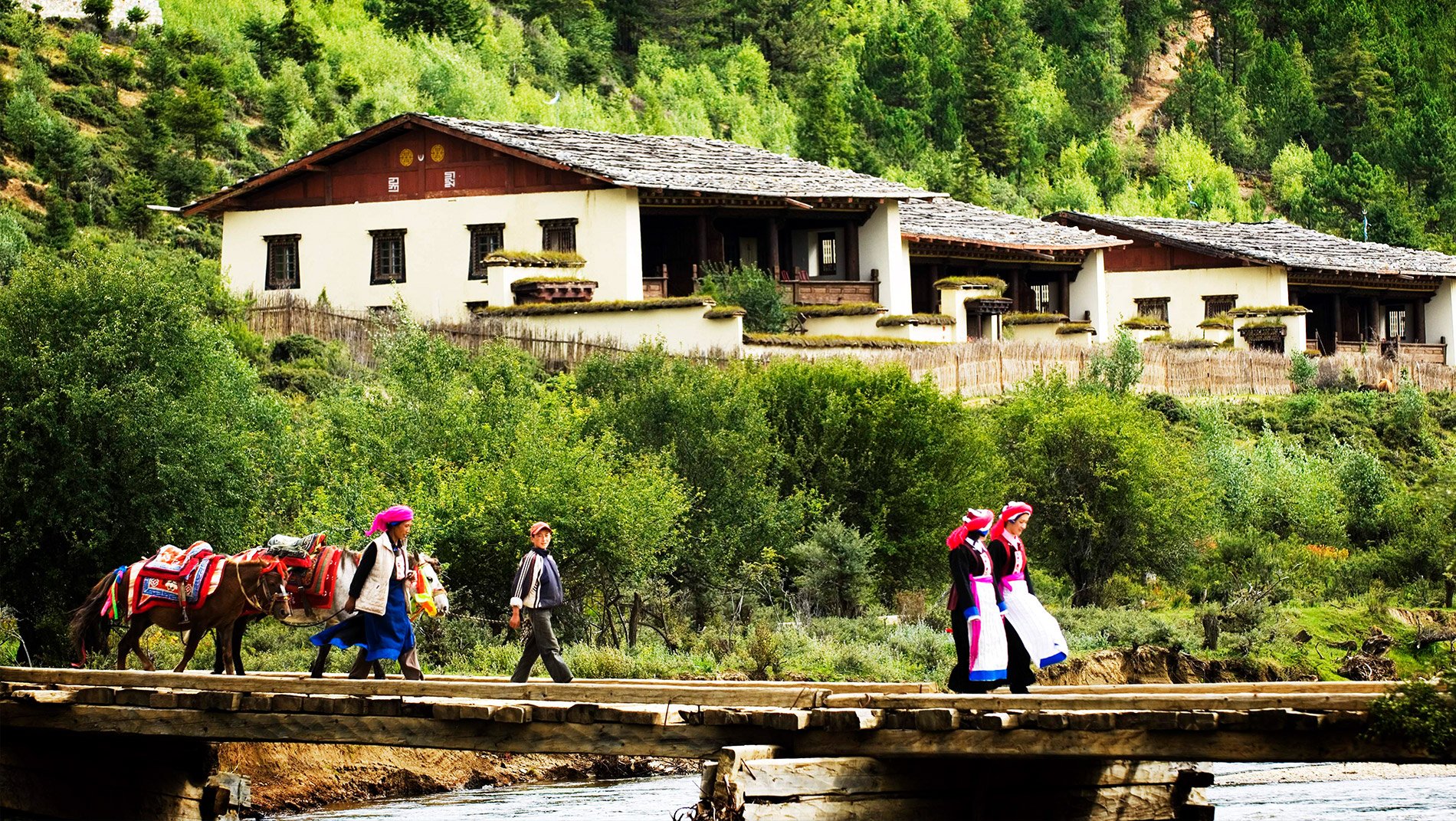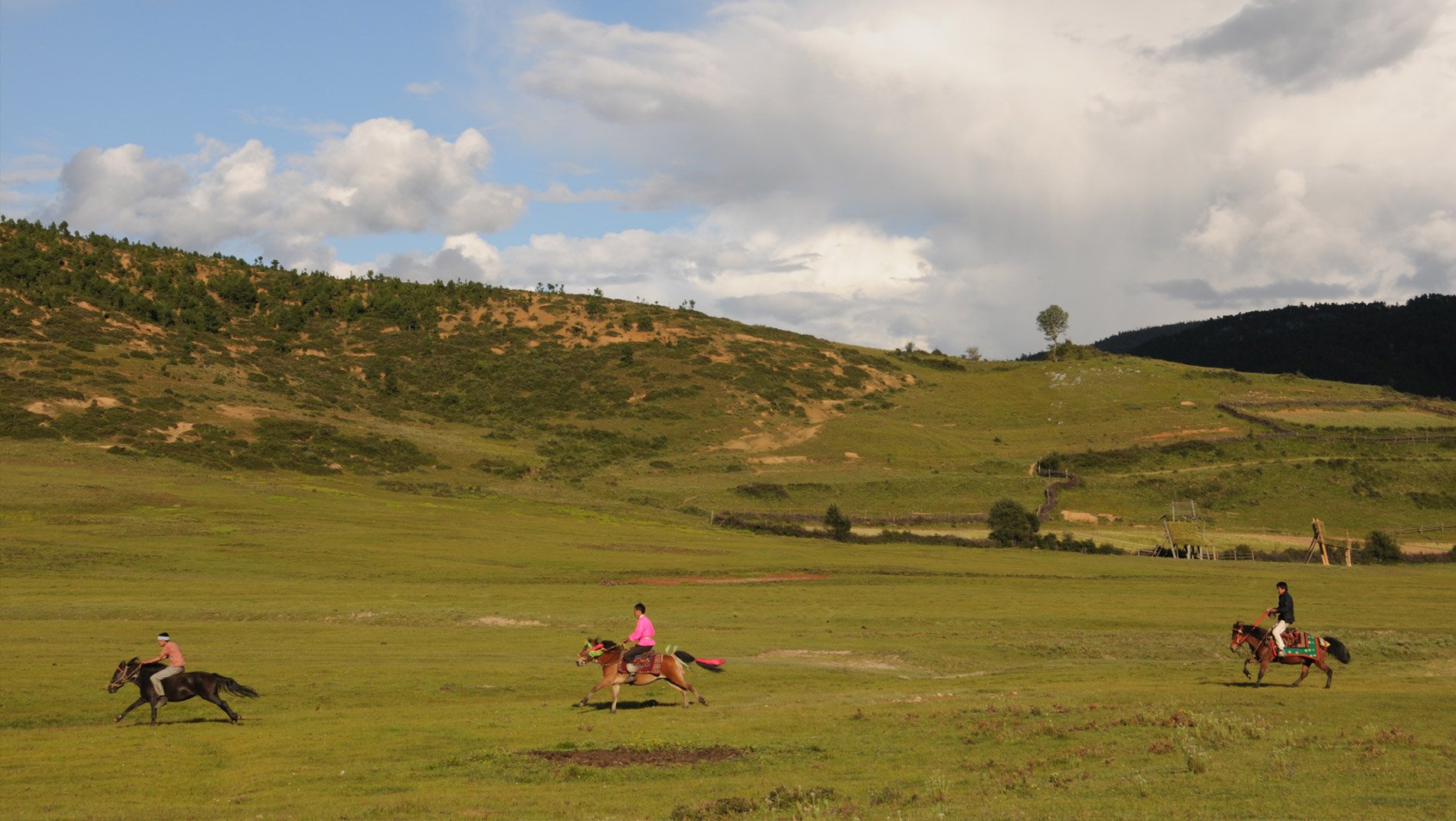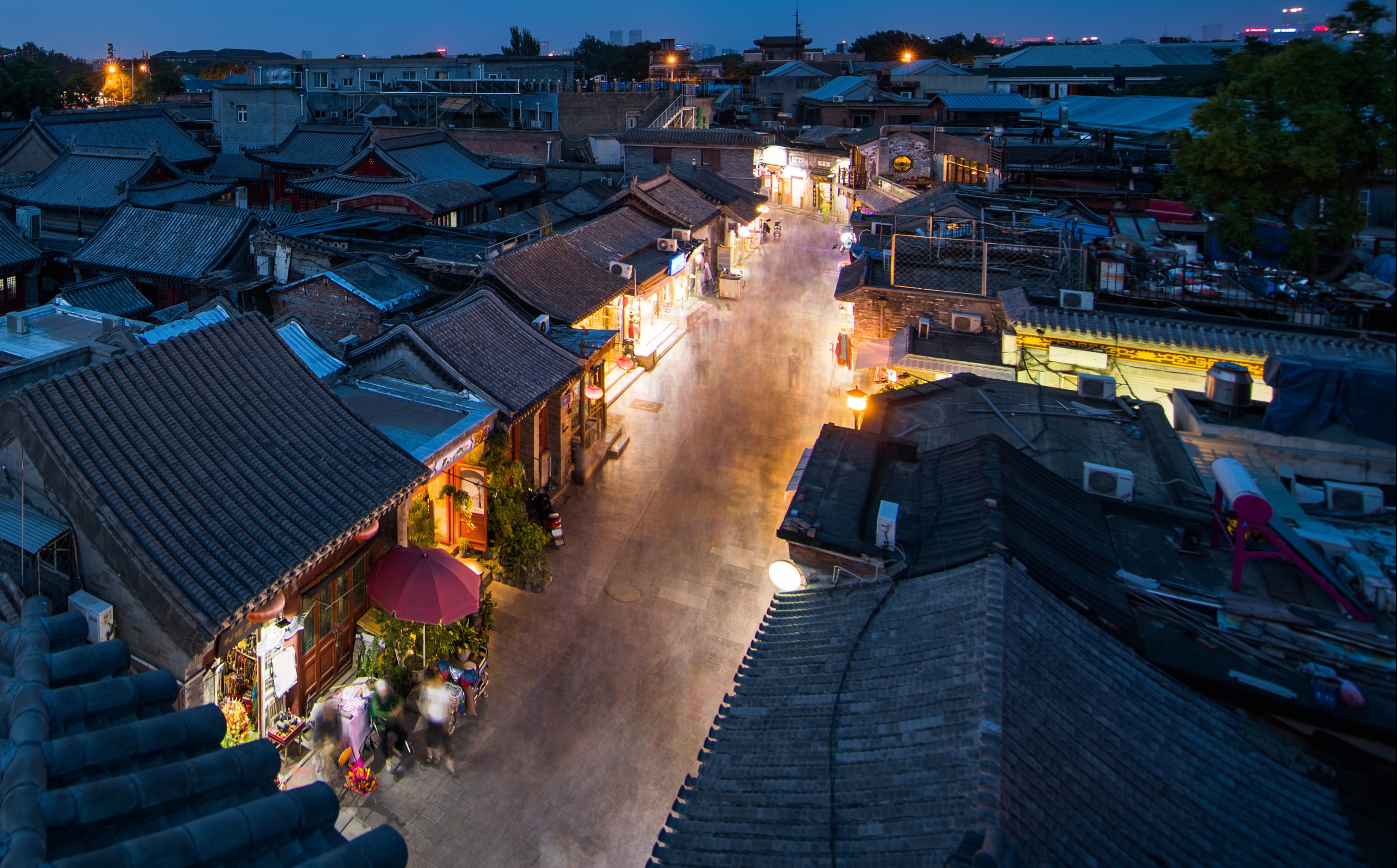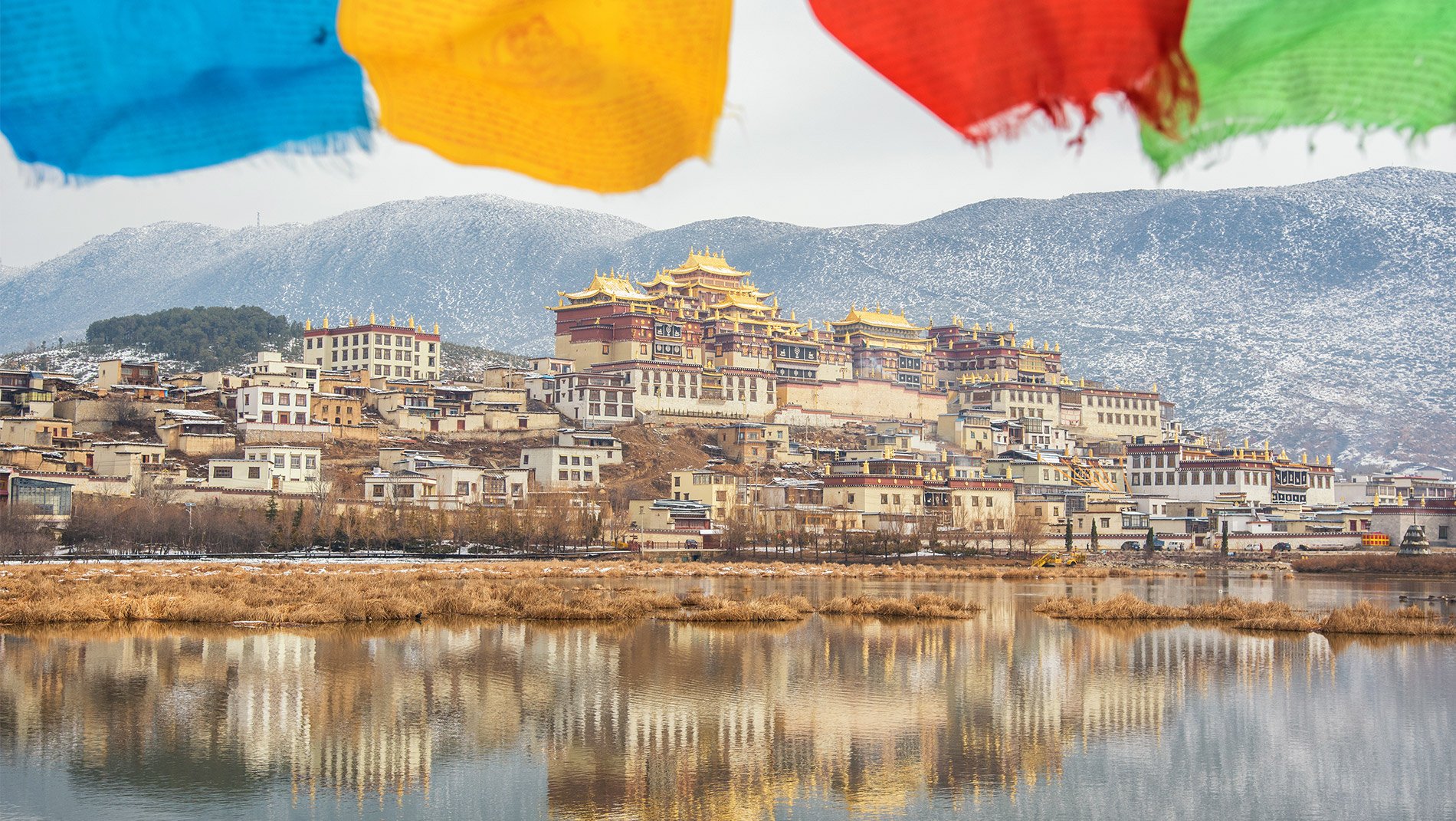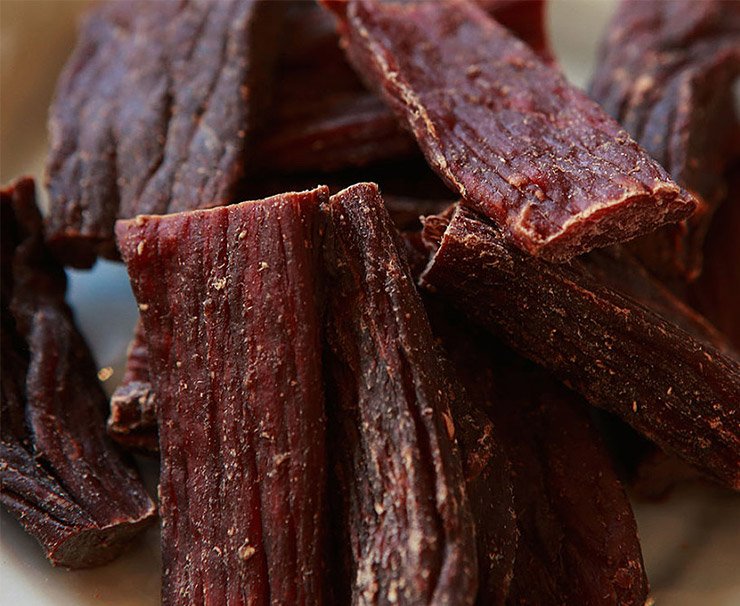- destinations
- shangri-la
In his 1933 novel Lost Horizon, British author James Hilton describes Shangri-La as a mystical valley isolated from the outside world. A hill-side monastery dominates a peaceful rural community, surrounded by high snow mountains. Now one knows where this paradise was located, but Hilton's oriental utopia captured the attention of millions of readers around the world.
To the proud eastern Tibetan Kham nomads and traders, what Hilton described sounded familiar; in fact it sounded like home. Originally called Gyalthang (a Tibetan name), then Zhongdian (a Chinese name), the city renamed itself Shangri-La after the book's paradise in 2001. Situated on an ancient trade route, the Tea and Horse Trail, Shangri-La lies between the Himalayan Mountains and western Sichuan province. Here you can ride a horse down a cultivated valley through Tibetan villages filled with snapping prayer flags and bright high-altitude sunlight. Depending on the season, there may be yogurt making or textile weaving to see. Step inside a traditional Tibetan home to break bread with welcoming locals.
shangri-la HIGHLIGHTS
A selection a some of the many incredible experiences that await you
Your attention to detail provided many extra-special moments & gave us a priceless gift: an introduction to China we will always cherish.
Custom Itineraries
Explore shangri-la through the eyes of a local
When my eldest son was three months old, we took him to Shangri-la to research this destination for our clients. New parents, we fussed over our young baby, alert to any threat. On the second floor of a village house, we met Lobsang, a local three month old. He had been left playing on a blanket next to an open fire in the middle of the room. This far more relaxed parenting style contrasted markedly with our fussiness, and Lobsang and his Tibetan parents didn’t seem any less happy for it. Comparing my stressed urban lifestyle to this rural, laidback Tibetan village was eye-opening and a feeling I will never forget.
We customize each of our itineraries based on your interests and traveling style. The itinerary below forms a base to
start the conversation.
Luxury Accommodations
Tibetan motifs, decorative objects and craftsmanship dominate in the leisure hotels in this area.
Learn More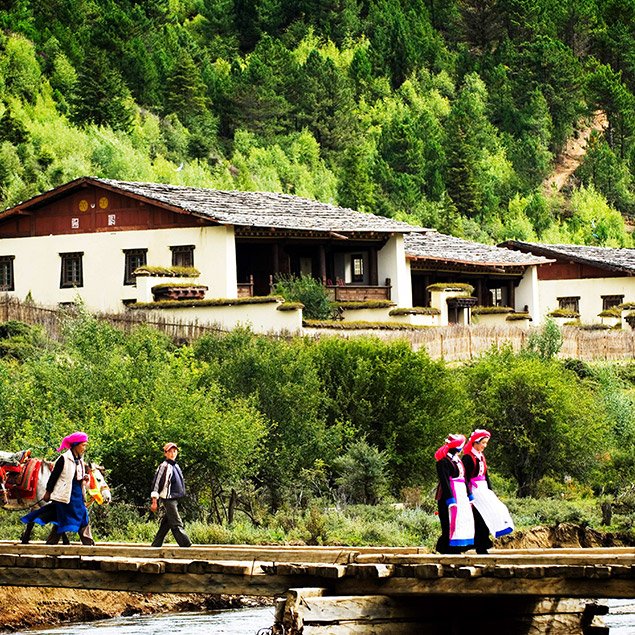
Banyan Tree Ringha
Located by a small temple at the top of the verdant Ringha valley, this resort provides a wonderful perch for your stay in this rural idyll.
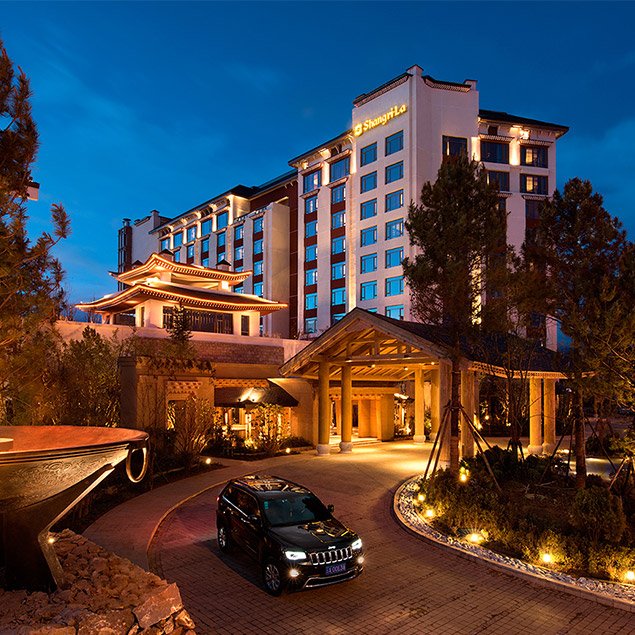
Hylandia
Inspired by the word ‘highland’, referring to the topography of the special region where Shangri-La is situated, Shangri-la Hotel group, itself named after the paradise in the novel “Lost Horizon”, incorporates local Tibetan themes in this downtown hotel.
Your Personal Traveling Concierge



Our China Hosts
Our China Hosts are part of what makes us unique; they help explain our success for over twenty years. Our China Hosts have been hand selected and expertly trained to provide you with the most unforgettable journey. From seamlessly ensuring flawless logistics, to deepening your cultural immersion, to effecting last minute adjustments, in the words of a guest, they take a trip "from excellence to perfection". Before you travel with us, it's hard to imagine what a China Host brings to the party. After, it's hard to imagine traveling without one.

suggested guide: tenzin
Fine Dining & Authentic Cuisine
Experience the finest in Chinese and Western cuisine
Yaks are raised for meat, dairy and fuel on the highlands of the Tibetan plateau, so you will see the common staples of the Tibetan diet, such as barley and yak meat, make themselves apparent. This alpine area is world famous for rare plants, such that the local hotpot incorporates a range of scrumptious mushrooms.
Demographics
- Formerly called Zhongdian in Chinese and Gyalthang in Tibetan
- Population: 130,000
- Literal Meaning of Shangri-La: Sun and moon in heart
Brief History
- Qin Dynasty (221 – 207BC) – Shangri-La comes under Tibetan rule
- Han Dynasty (206 BC – 220 AD) – The Qiang ethnic group control the area.
- Three Kingdoms Period (220 – 280) – The Chinese government in Yunnan extends its territory here.
- South & North Dynasty (420 – 589) – Shangri-La belongs to the Dangxian Tribe
- Tang Dynasty (581 – 618) – The Tibetan Empire, now strong, re-occupies the area.
- Song Dynasty (960 - 1279) – The rise of the Dali Kingdom
- Yuan Dynasty (1279 – 1368) – The area is named Da Dan Dang
- 1293 – Da Dan Dang belongs to the Luxuanweisi Government under Mongol rule
- Qing Dynasty (1368 – 1644) – Shangri-La is given to the Dalai Lama and renamed Zhongdian Ting
- 1762 – Shangri-La is put under the control of the Lijiang government
- 1913 – The city is renamed Zhongdian
- 2001 – The city is renamed Shangri-La
- 2014 – Fire breaks out in the 1,000 year-old Old Town displacing over 2,000 residents.
Geography
- Located on the footsteps of the Tibetan plateau on the border with Sichuan province, Shangri-La is surrounded by the Hengduan Mountain range. Balagezong is the highest mountain in the region at 5,500m.
- Altitude: 3,160m (10,370ft)
- Main River: Jinsha River
- Total area coverage: 11,613 km2 (4,484 m2)
Recommended Destinations
After your time spent exploring shangri-la you may want to consider these other recommended destinations
Help Me Decide-
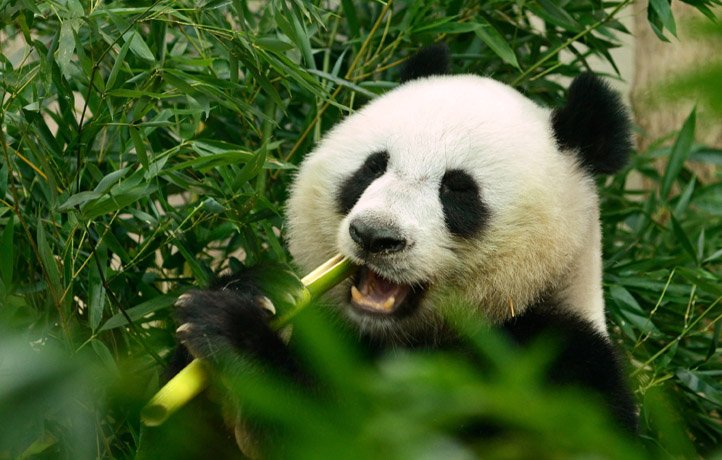
Chengdu
Home to the Great Panda, Sichuan cuisine & the location of the astonishing cultural relic "Sanxingdui".
-
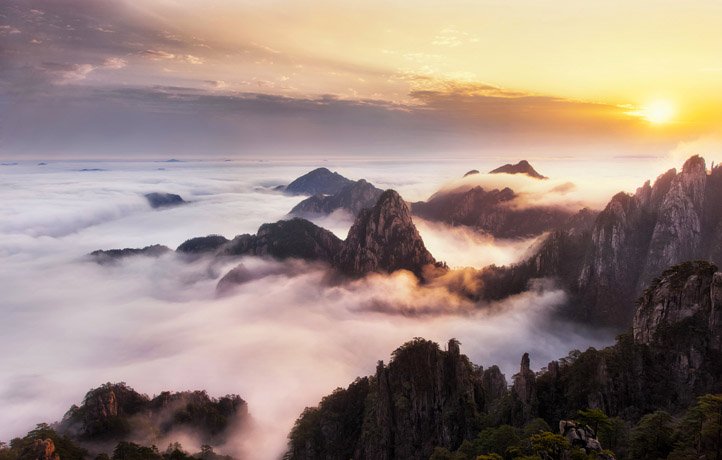
Huangshan
Black granite mountains pierce the swirling mists overlooking a region renowned for its ancient architecture.
-
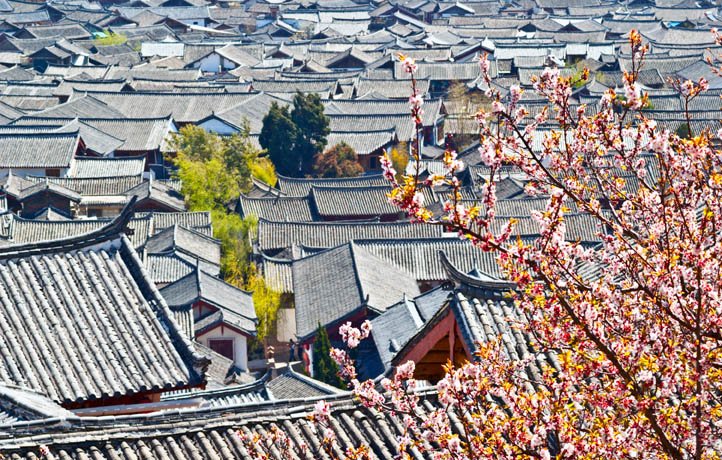
Lijiang
A colourful, eclectic & charming border town on the Tea and Horse Route, home to more than 10 ethnic minorities.
-
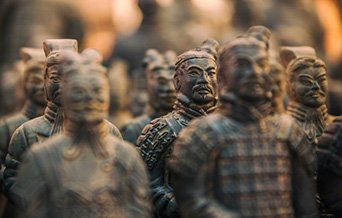
Xi'an
China’s capital for 11 centuries boasts the Terracotta Warriors and a Muslim quarter that dates to the time of the Silk Road.
